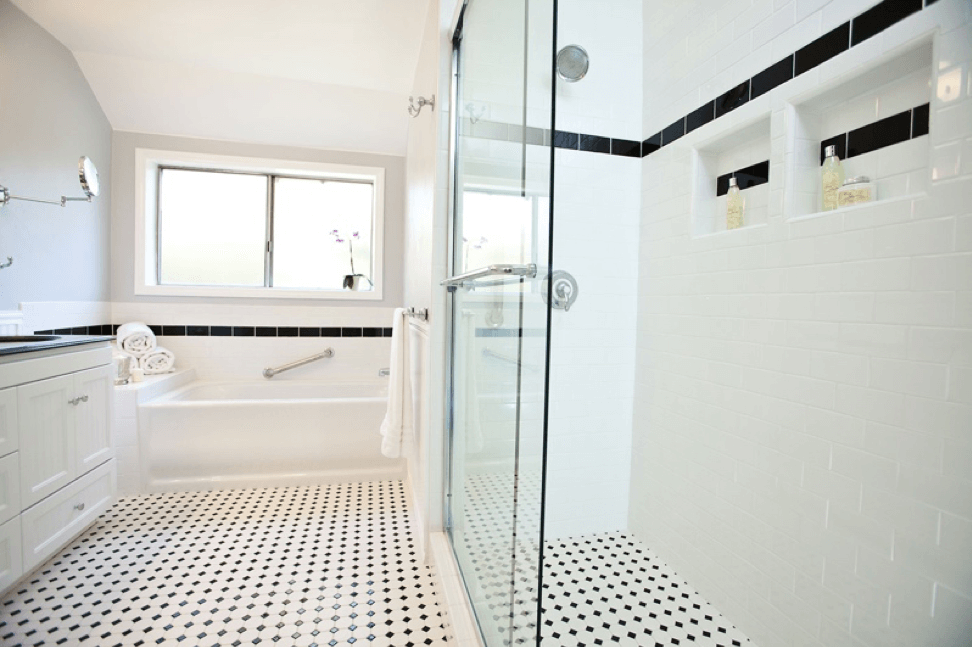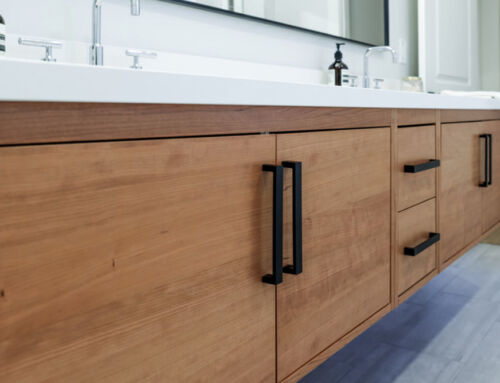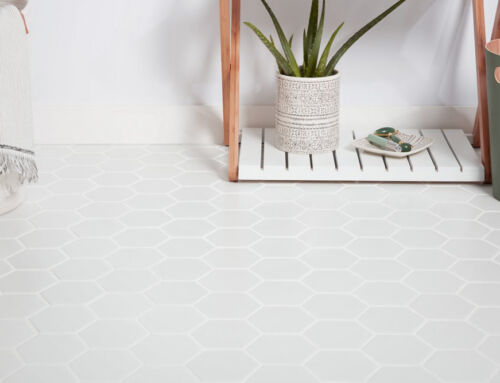So, you’ve heard of various types of tiles spoken about; typically ceramic and porcelain. We’re often asked, “What’s the difference?” What’s the difference functionally? What’s the difference from a style perspective? And, what’s the difference from a cost perspective?
First, ceramic tiles are typically less durable than porcelain tiles. With that said, the properties of the tile are not that critical in terms of breakage in a residential bathroom situation. There aren’t the same heavy type items that would be dropped in a bathroom to crack that tile on the floor, like there would be in a kitchen or in a public place. Now, if you’re building an exterior project, kitchen or a public place, then you definitely want to consider porcelain tile because the chances of cracking tile is going to be higher. Porcelain tiles have a higher breaking coefficient and so that equates to a stronger tile. This is also even more important to consider on a floor versus on the wall.
The second thing that’s different between porcelain and ceramic tile is that oftentimes manufacturers can do things with porcelain tile, texturally, that they can’t do with ceramic tile. Ceramic tile is typically glazed on the surface. A little bit of texture can be created with it, but they can’t do the types of things that they can do with porcelain tile — giving it deeper textures, waves and other things. In addition, the imaging technology used with porcelain tiles is much more advanced so a more “realistic” tile can be created to look like stone or wood.

Porcelain tiles come two ways. They come glazed and they come in color body. Color body means that the tile color goes all the way through so that if you were to chip that tile, the color would be all the way through. With a glazed tile, you could chip the top of the tile and potentially see the lighter color of the body of the tile.
Also, grout joints can be different between ceramic and porcelain tile. A lot of porcelain tiles come with rectified edges. Rectified means that they have very sharp edges, can be a true 90-degree angle, and that allows you to put these tiles much closer together than you typically would be able to put ceramic tiles. Ceramic tiles typically have a little bit of curved edges which, when installed, creates a bit of a channel that results in wider grout joints. And so, if you’re trying to lessen the width of your grout joints, you probably want to go with a porcelain tile.

Finally, let’s talk about cost. I can tell you that there are ceramic tiles that are far more expensive than porcelain tiles and I can tell you that there are porcelain tiles that are far more expensive than ceramic tiles. It really just depends on the size of the tile, style, manufacturing quality and design, as far as where prices will land. Don’t shy away from porcelain tiles because you’re afraid they’re going to be too expensive and don’t think that the ceramic tile that you’re choosing is going to be cheap.
There you have it — ceramic versus porcelain tile. Don’t forget to check out our other videos on YouTube. Go to our website or check us out on social media. Thanks for your interest in our blog!



